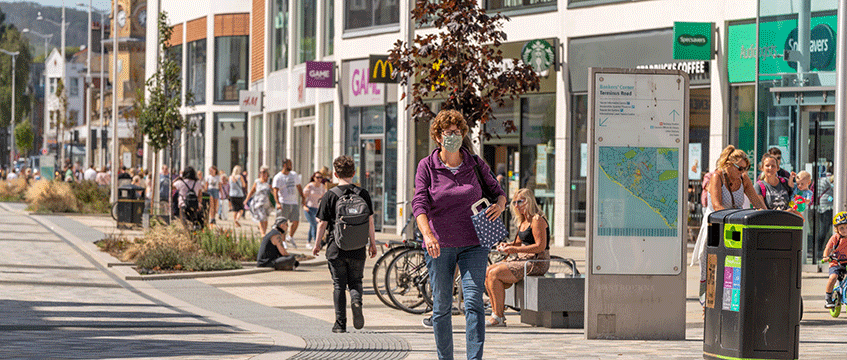More than 17% of Britain’s chain stores in lockdown limbo
Just over 17% of chain stores in Britain remained boarded up from the first lockdown before England headed into a second one last week, according to new research.
Some 36,209 outlets operated by multiples (retailers with more than five stores) in Britain reopened from closures after restrictions were eased following the first lockdown, out of 43,766 tracked by the Local Data Company on behalf of PwC in September.
But 5,522 chain stores remained temporarily closed ahead of the second lockdown, while a further 2,035 were vacated without any formal announcement of the business’s next steps. This has left around 17.3% of multiple stores in stasis.
Just over 17% of chain stores in Britain remained boarded up from the first lockdown before England headed into a second one last week, according to new research.
Some 36,209 outlets operated by multiples (retailers with more than five stores) in Britain reopened from closures after restrictions were eased following the first lockdown, out of 43,766 tracked by the Local Data Company on behalf of PwC in September.
But 5,522 chain stores remained temporarily closed ahead of the second lockdown, while a further 2,035 were vacated without any formal announcement of the business’s next steps. This has left around 17.3% of multiple stores in stasis.
In total, 888 acres of chain retail across shopping locations remained in limbo after the first national lockdown.
Pubs and bars, Italian restaurants, dental surgeries, cinemas, social clubs and entertainment venues were found to be most likely to stay shut.
However, hair and beauty salons, Asian restaurants, estate agents, mobile phone shops, off-licences, DIY shops and vaping stores were among the multiples bouncing back quickest.
Regional trends
The West Midlands was under more pressure than any other region in Britain, with nearly a quarter of premises either vacated or remaining closed. Similarly, 23.2% of stores in the East Midlands stayed shut.
At the other end of the scale, the East of England and Greater London reopened the most multiple stores after the first lockdown. Around 13% of stores in the East of England stayed shut, with London recording a 14.5% equivalent.
By location type, retail parks remained the most resilient, with 90.3% of tenants reopening after lockdown. This was followed by shopping centres and high streets.
Smaller high streets and shopping parades were found to be most exposed to the effects of the lockdown, after reopening 73.7% of 10,851 outlets.
Mark Addley, real estate restructuring partner at PwC, said: “The best-performing stores with the highest footfall have traditionally been nestled in city centres, but they still have the millstone of the largest rents in many cases.
“Even with rent deferrals in place and turnover-based rents becoming increasingly popular, do [retailers] stay the course and retain their prime real estate? Or do they close some of them down where the revenues are not strong enough to help staunch cash burn across their business?”
Turnover rents
Addley observed that the increasing use of turnover-based rent models “may offer a lifeline” for both landlords and tenants in the short term, but highlighted the “significant” consequences for property owners as they become more reliant on the tenant’s underlying performance.
While there are more company voluntary arrangements on the horizon – largely enabling tenants to stay in some locations – Addley expects to see a growing shift towards mixed-use locations.
Addley also noted that retailers are “actively working with landlords to consider their options” for repurposing. “Nothing is off the table,” he said.
Zelf Hussain, retail restructuring partner at PwC, said: “Businesses, especially those in the retail, hospitality and leisure sectors, have to balance a number of spinning plates.
“They are faced with a complex task of working out how national restrictions impact multiple outlets and venues in locations which may be operating under different rules as we come out of the latest lockdown and back into the tier system.
“Operationally, workforce redeployment, downsizing and potentially mothballing more operations will be at the top of firms’ agendas.
“Additionally, businesses including retailers securing finance against their stock and inventory have the return of the crown preference to prepare for next month. Lenders can now be trumped by HMRC in the pecking order, which could lead to tougher or reduced lending terms, putting further pressure on the balance sheet.”
See also: Lease release: 1bn sq ft could be handed back to retail and leisure landlords
To send feedback, e-mail pui-guan.man@egi.co.uk or tweet @PuiGuanM or @estatesgazette
Photo by Jon Santa Cruz/Shutterstock











